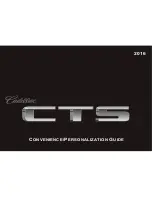
8
CONSUMER INFORMATION, REPORTING SAFETY DEFECTS & BINDING ARBITRATION OF WARRANTY CLAIMS
8
Intended Outboard Sidewall:
The side
of an asymmetrical tire, that must al-
ways face outward when mounted on a
vehicle.
Kilopascal (kPa):
The metric unit for
air pressure.
Load Index:
An assigned number rang-
ing from 1 to 279 that corresponds to
the load carrying capacity of a tire.
Maximum Inflation Pressure:
The
maximum air pressure to which a cold
tire may be inflated. The maximum air
pressure is molded onto the sidewall.
Maximum Load Rating:
The load rat-
ing for a tire at the maximum permis-
sible inflation pressure for that tire.
Maximum Loaded Vehicle Weight:
The sum of curb weight; accessory
weight; vehicle capacity weight; and
production options weight.
Normal Occupant Weight:
The num-
ber of occupants a vehicle is designed
to seat multiplied by 150 pounds (68
kg).
Occupant Distribution:
Designated
seating positions.
Outward Facing Sidewall:
The side of
a asymmetrical tire that has a particular
side that faces outward when mounted
on a vehicle. The side of the tire that
contains a whitewall, bears white letter-
ing or bears manufacturer, brand and or
model name molding that is higher or
deeper than the same moldings on the
other sidewall of the tire.
Passenger (P-Metric) Tire:
A tire used
on passenger cars and some light duty
trucks and multipurpose vehicles.
Recommended Inflation Pressure:
Vehicle manufacturer's recommended
tire inflation pressure and shown on the
tire placard.
Radial Ply tire:
A pneumatic tire in
which the ply cords that extend to the
beads are laid at 90 degrees to the
centerline of the tread.
Rim:
A metal support for a tire and upon
which the tire beads are seated.
Cold Tire Pressure:
The amount of air
pressure in a tire, measured in pounds
per square inch (psi) or kilopascals
(kPa) before a tire has built up heat from
driving.
Curb Weight:
This means the weight of
a motor vehicle with standard and op-
tional equipment including the maxi-
mum capacity of fuel, oil and coolant,
but without passengers and cargo.
DOT Markings:
A code molded into the
sidewall of a tire signifying that the tire
is in compliance with the U.S. Depart-
ment of Transportation motor vehicle
safety standards. The DOT code in-
cludes the Tire Identification Number
(TIN), an alphanumeric designator which
can also identify the tire manufacturer,
production plant, brand and date of
production.
GVWR:
Gross Vehicle Weight Rating
GAWR FRT:
Gross Axle Weight Rating
for the front Axle.
GAWR RR:
Gross Axle Weight Rating
for the rear axle.
Summary of Contents for 2007 Tucson
Page 1: ...2007 ...
Page 10: ...F8 INSTRUMENTSANDCONTROLS B250A01JM AAT B250A01JM U ...
Page 58: ...1FEATURESOFYOURHYUNDAI 46 INSTRUMENT CLUSTER AND INDICATOR LIGHTS B260A02JM AAT B260A01JM U ...
Page 271: ...6 DO IT YOURSELFMAINTENANCE 36 G200E01JM AAT Inner Panel G200E02JM ...
Page 295: ...9 Measurement 9 2 Engine 9 3 Lubrication Chart 9 4 9 VEHICLE SPECIFICATIONS ...
Page 299: ...10 10 INDEX ...
















































